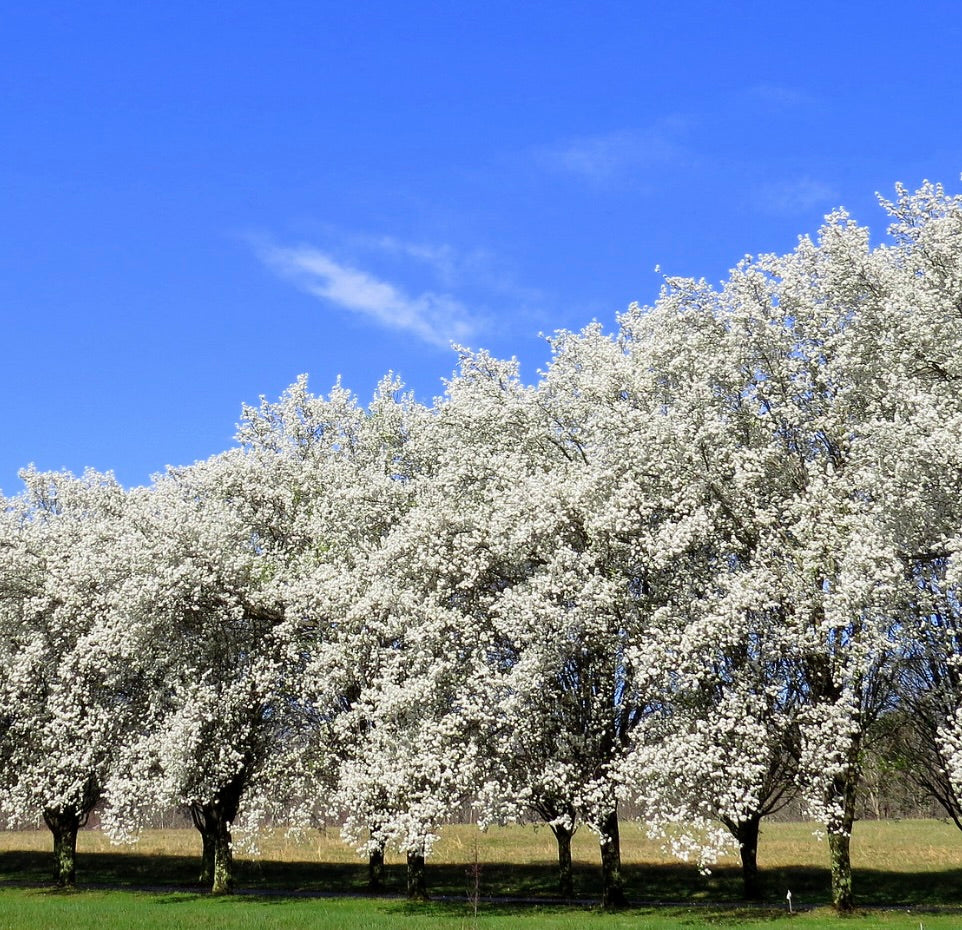- Catalogue Plants
Pyrus calleryana cv "Chanticleer" 80-100cm
Pyrus calleryana cv "Chanticleer" 80-100cm
Couldn't load pickup availability
Plant Description
Pyrus calleryana cv. "Chanticleer," commonly known as Chanticleer Pear or Bradford Pear, is a popular and attractive ornamental tree known for its upright, pyramidal shape and profusion of white springtime blossoms. This deciduous tree features glossy, dark green leaves that turn shades of red, orange, or purple in the fall, creating a stunning display of autumn color. "Chanticleer" is cherished for its relatively compact size, making it an excellent choice for urban landscapes, gardens, and streetscapes. Its non-fruiting characteristics also make it a desirable selection, as it eliminates the mess of fallen fruit. This cultivar offers year-round visual interest and is highly regarded for its adaptability and low-maintenance nature.
Cultivation: Cultivating Pyrus calleryana cv. "Chanticleer" is straightforward, and you can enjoy its ornamental features with these essential cultivation tips:
-
Climate: "Chanticleer" Pears thrive in temperate climates. They are adaptable to a range of conditions but perform best in areas with moderate rainfall and mild winters.
-
Sunlight: Plant "Chanticleer" in a location that receives full sunlight to partial shade. It benefits from at least 6 hours of direct sunlight each day for optimal growth and flowering.
-
Soil: Provide well-draining soil with good aeration. "Chanticleer" Pears can tolerate various soil types, including loam and clay, but they thrive in fertile, slightly acidic to neutral soil.
-
Watering: Newly planted trees require regular watering to establish roots. Once established, "Chanticleer" Pears are somewhat drought-tolerant but benefit from occasional deep watering during dry spells.
-
Fertilization: Apply a balanced, slow-release fertilizer in the spring to promote healthy growth and flowering. Follow the package instructions for proper application.
-
Pruning: Prune "Chanticleer" as needed to maintain its pyramidal shape and remove dead or crossing branches. Pruning is best done in late winter or early spring before new growth begins.
-
Pests and Diseases: These trees are generally resistant to most pests and diseases. However, occasional inspections for issues like aphids or fire blight can help prevent problems.
-
Mulching: Apply a layer of mulch around the base of the tree to conserve moisture, regulate soil temperature, and suppress weeds.
-
Fall Color: Enjoy the brilliant fall foliage of "Chanticleer" Pears, which can vary in color from tree to tree. This adds seasonal interest to your landscape.
-
Propagation: "Chanticleer" Pears can be propagated through hardwood cuttings or by grafting onto compatible rootstock.
By following these cultivation tips, you can appreciate the year-round beauty and adaptability of Pyrus calleryana cv. "Chanticleer" in your garden or landscape while ensuring its health and vitality.
IMPORTANT: Please be aware that picture 1 show adult plant not for sale, the offer is for a plant in the dimension indicated in title description.
Botanical family: Rosaceae
Botanical genus: Pyrus
Botanical species: Pyrus calleryana
SKU:BA-1124-S
Cultivation
Cultivation
Info and Disclaimers
Info and Disclaimers
Plant Height: 80-100cm
Plant Diameter:
Pot Size:
Grafted/Not Grafted:
Disclaimer: Be aware that most plants change across seasons. If present foliage, could have been fallen or change in its color.


